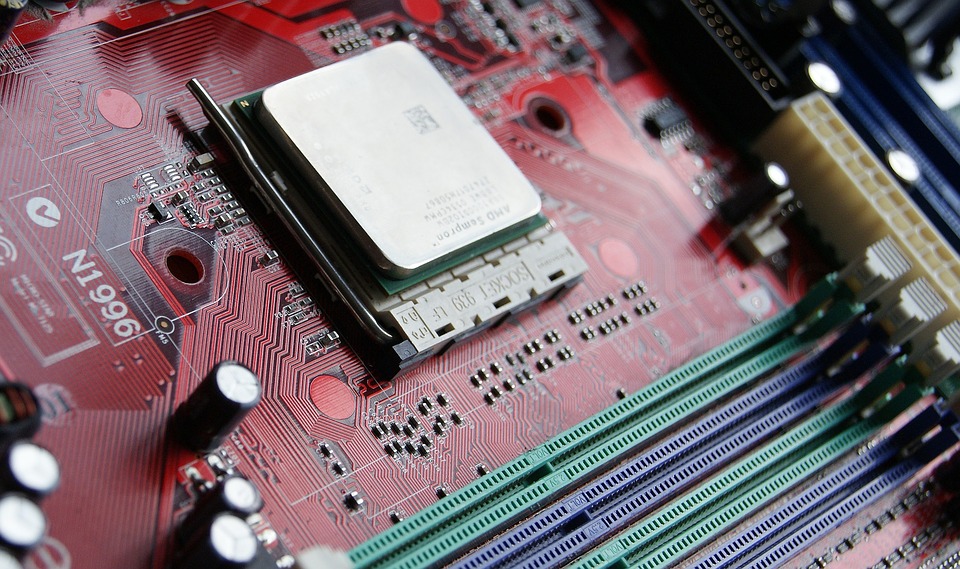1. Free cash flow
AMD has an advantage over Nvidia in that its investment rhetoric focuses solely on increasing market share. The company is trying to expand its influence at any cost. For the firm, this is a kind of game in which it must take first place. And although shareholders often turn into fanatics, rooting for weak players, the problem lies in the fundamentals of AMD's business. As soon as an investor decides to dig a little deeper and conduct a more thorough analysis, all the risks immediately surface.
For example, over the past five years, AMD revenue increased by about 18% to $ 6.5 billion, but even with such steady growth, the company's free cash flow remained negative (- $ 129 million in 2018).
If we talk about Nvidia, for the same period of time its revenue grew by 250%, and free cash flow increased four times.
2. Financial position
The situation is similar here. It is not difficult to guess which company’s financial situation will be more advantageous given the fact that AMD continues to burn free money.
Among the advantages of Nvidia are a strong balance and the ability to generate good cash flows. Until the recent acquisition of Mellanox for $ 6.8 billion, Nvidia’s net cash flow was approximately $ 5 billion.
AMD’s financial position is a kind of minefield. Despite the extremely favorable environment for the company, which from 2017 to 2018 created the increasingly popular cryptocurrency, it could not bring its balance into a stable form.
By the end of last year, the firm had a net cash flow of $ 1.1 billion, while the level of debt was about the same. Given the growing competition from other players, AMD's fragile balance is unlikely to allow it to take the lead.
3. Cost estimate
Let us recall words of the legendary investor Warren Buffet that stocks of weak companies bought at the right price often bring greater returns than securities of excellent companies bought at the wrong price.
In this regard, you need to pay attention to the fate of revenues generated by AMD in comparison with Nvidia. AMD returns about 40% of net profit back to the business in the form of capital costs, while Nvidia spends less than 15% on its needs. So it would be dishonest and unfair to say that AMD’s revenues are as strong as those of Nvidia.
In addition, the price/earnings ratio of AMD is almost 80, while P/E ration of Nvidia, despite a good balance, strong growth and generating a large amount of free cash flow, is only 27.
source: thestreet.com
AMD has an advantage over Nvidia in that its investment rhetoric focuses solely on increasing market share. The company is trying to expand its influence at any cost. For the firm, this is a kind of game in which it must take first place. And although shareholders often turn into fanatics, rooting for weak players, the problem lies in the fundamentals of AMD's business. As soon as an investor decides to dig a little deeper and conduct a more thorough analysis, all the risks immediately surface.
For example, over the past five years, AMD revenue increased by about 18% to $ 6.5 billion, but even with such steady growth, the company's free cash flow remained negative (- $ 129 million in 2018).
If we talk about Nvidia, for the same period of time its revenue grew by 250%, and free cash flow increased four times.
2. Financial position
The situation is similar here. It is not difficult to guess which company’s financial situation will be more advantageous given the fact that AMD continues to burn free money.
Among the advantages of Nvidia are a strong balance and the ability to generate good cash flows. Until the recent acquisition of Mellanox for $ 6.8 billion, Nvidia’s net cash flow was approximately $ 5 billion.
AMD’s financial position is a kind of minefield. Despite the extremely favorable environment for the company, which from 2017 to 2018 created the increasingly popular cryptocurrency, it could not bring its balance into a stable form.
By the end of last year, the firm had a net cash flow of $ 1.1 billion, while the level of debt was about the same. Given the growing competition from other players, AMD's fragile balance is unlikely to allow it to take the lead.
3. Cost estimate
Let us recall words of the legendary investor Warren Buffet that stocks of weak companies bought at the right price often bring greater returns than securities of excellent companies bought at the wrong price.
In this regard, you need to pay attention to the fate of revenues generated by AMD in comparison with Nvidia. AMD returns about 40% of net profit back to the business in the form of capital costs, while Nvidia spends less than 15% on its needs. So it would be dishonest and unfair to say that AMD’s revenues are as strong as those of Nvidia.
In addition, the price/earnings ratio of AMD is almost 80, while P/E ration of Nvidia, despite a good balance, strong growth and generating a large amount of free cash flow, is only 27.
source: thestreet.com





